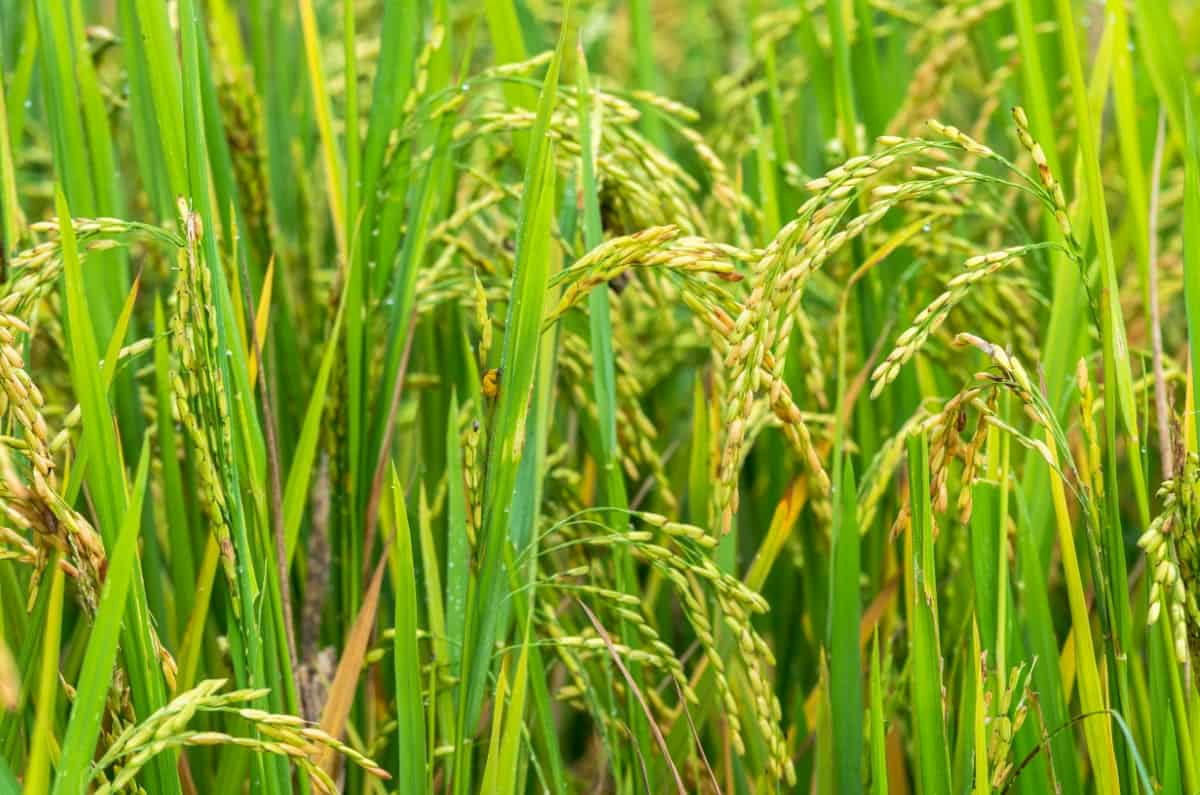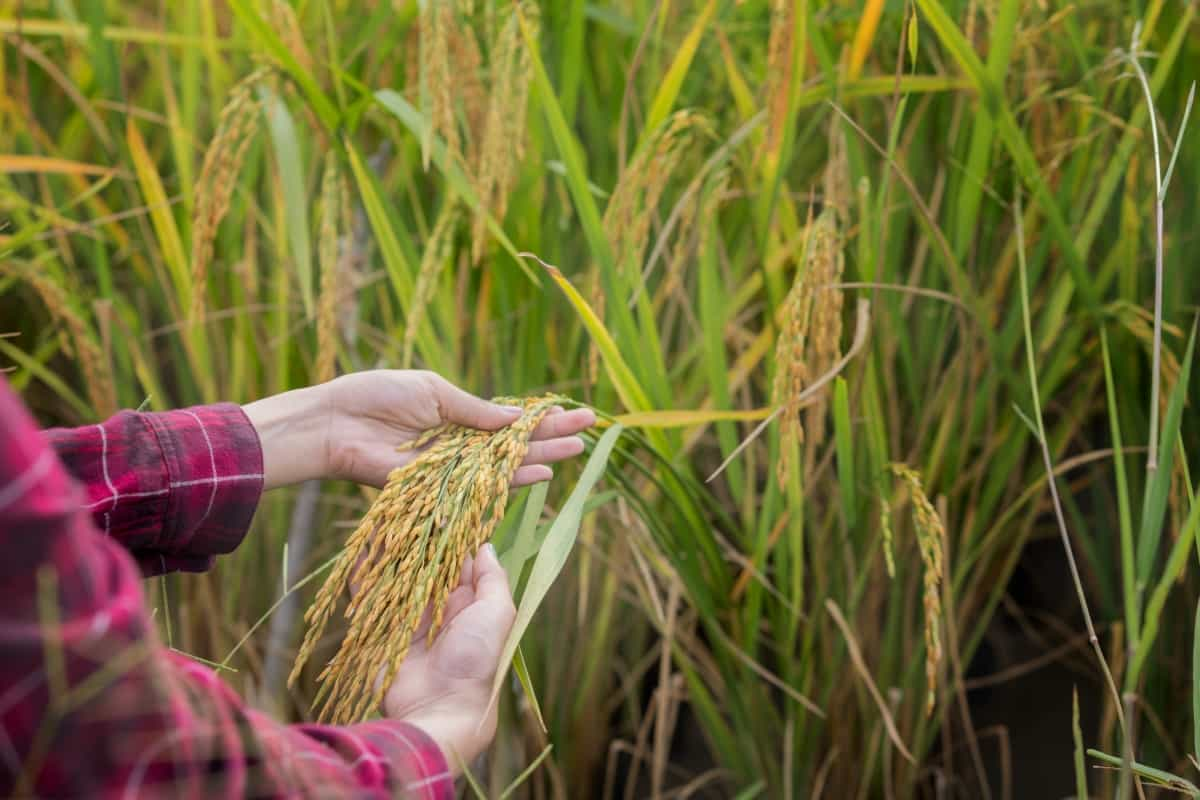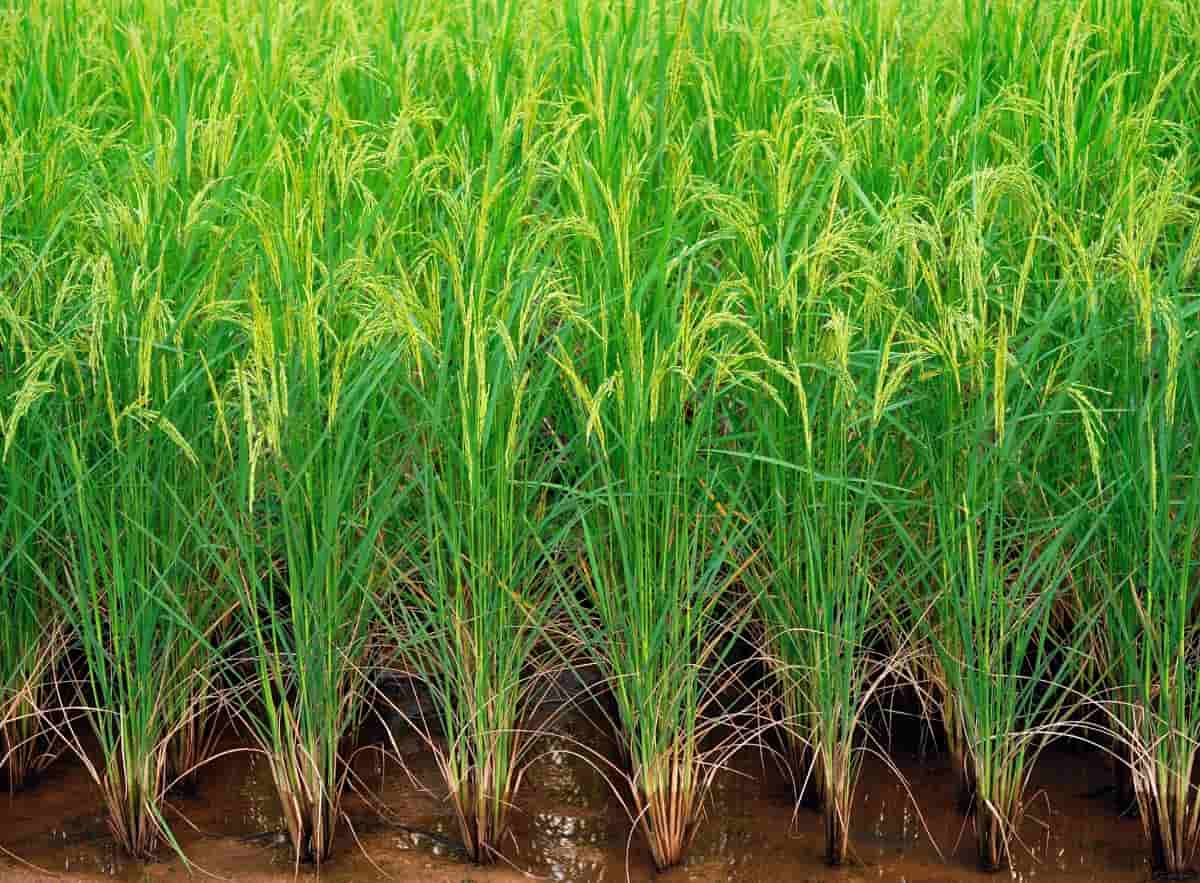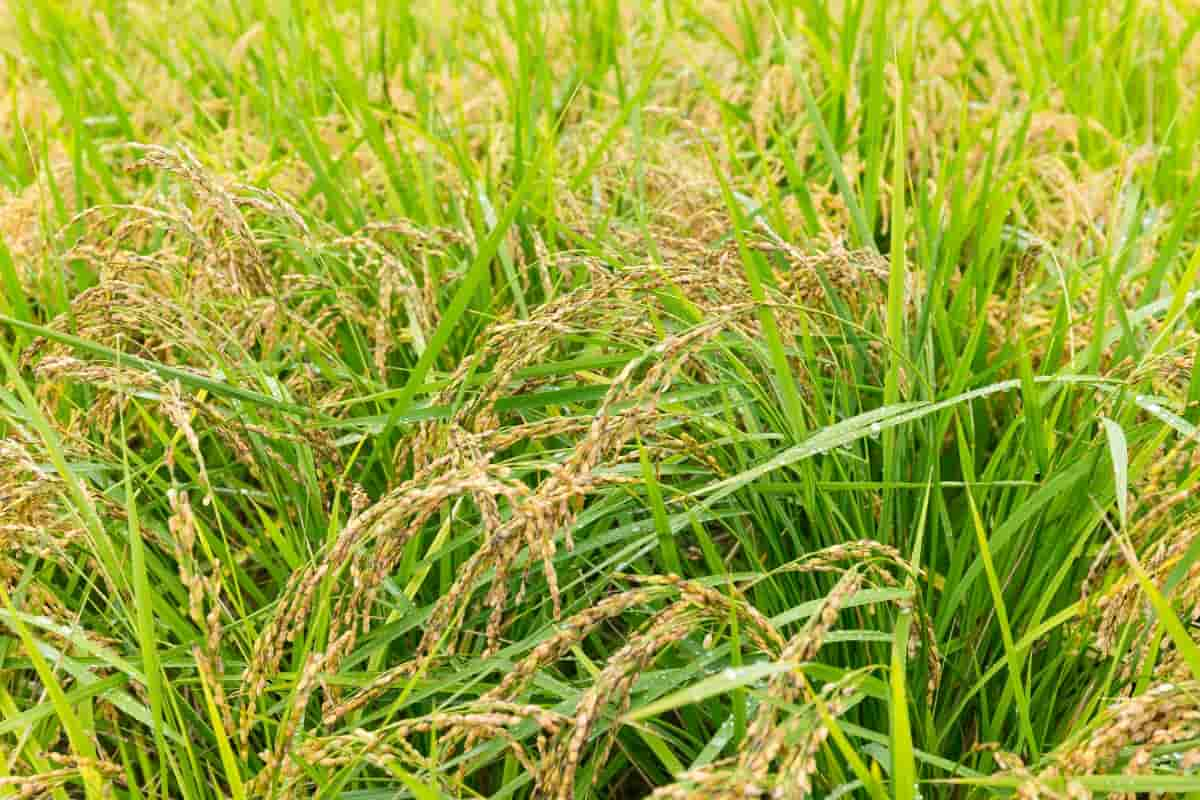Rice sheath blight (SB) is a serious fungal disease caused by Rhizoctonia solani that affects rice production worldwide. It can reduce yield by 50% and degrade grain quality. The disease is favored by high humidity, dense canopy, high nitrogen fertilization, and susceptible varieties. There is no resistant variety available, so chemical control is the main option to manage SB.

Best Fungicide for Rice Sheath Blight
Azoxystrobin
This is a systemic fungicide that belongs to the strobilurin group. It inhibits mitochondrial respiration and prevents fungal growth and spore germination. It has a broad spectrum of activity against many fungal diseases, including SB. Applied as a foliar spray at 0.5-1 ml/liter of water at the booting stage or the first sign of disease. It can also be mixed with other fungicides for better efficacy and resistance management.
Propiconazole
This is a systemic fungicide that belongs to the triazole group. It inhibits ergosterol biosynthesis and disrupts fungal cell membrane function. It has a narrow spectrum of activity against SB and other diseases caused by Rhizoctonia solani. Applied as a foliar spray at 0.5-1 ml/liter of water at the booting stage or the first sign of disease. It can also be mixed with other fungicides for better efficacy and resistance management.
Tricyclazole
This is a systemic fungicide that belongs to the benzothiazole group. It inhibits melanin biosynthesis and interferes with fungal cell wall formation. It has a narrow spectrum of activity against SB and other diseases caused by Pyricularia oryzae. Applied as a foliar spray at 0.6-0.8 g/liter of water at the booting stage or the first sign of disease.
Validamycin
This is a systemic fungicide that belongs to the aminoglycoside group. It inhibits trehalase enzymes and reduces fungal carbohydrate metabolism. It has a narrow spectrum of activity against SB and other diseases caused by Rhizoctonia solani. Applied as a foliar spray at 2-3 ml/liter of water at the booting stage or the first sign of disease.
Pencycuron
This is a systemic fungicide that belongs to the phenylurea group. It inhibits cell division and growth in fungi. It has a narrow spectrum of activity against SB and other diseases caused by Rhizoctonia solani. Applied as a seed treatment at 6-8 g/kg of seed or as a foliar spray at 0.25-0.5 g/liter of water at the booting stage or the first sign of disease.
Flutolanil
This is a systemic fungicide that belongs to the benzamide group. It inhibits succinate dehydrogenase and blocks fungal respiration. It has a narrow spectrum of activity against SB and other diseases caused by Rhizoctonia solani. Applied as a seed treatment at 4-6 g/kg of seed or as a foliar spray at 0.25-0.5 g/liter of water at the booting stage or the first sign of disease.
In case you missed it: Bacterial Leaf Blight in Rice: Control Management and Treatment

Hexaconazole
This is a systemic fungicide that belongs to the triazole group. It inhibits ergosterol biosynthesis and disrupts fungal cell membrane function. It has a broad spectrum of activity against many fungal diseases, including SB. Applied as a seed treatment at 2-3 g/kg of seed or as a foliar spray at 0.5-1 ml/liter of water at the booting stage or the first sign of disease.
Isoprothiolane
This is a systemic fungicide that belongs to the dithiolane group. It inhibits fungal cell wall synthesis and induces host resistance mechanisms. It has a broad spectrum of activity against many fungal diseases, including SB. Applied as a foliar spray at 1-2 ml/liter of water at the booting stage or the first sign of disease.
Tebuconazole
This is a systemic fungicide that belongs to the triazole group. It inhibits ergosterol biosynthesis and disrupts fungal cell membrane function. It has a broad spectrum of activity against many fungal diseases, including SB. Applied as a foliar spray at 0.5-1 ml/liter of water at the booting stage or the first sign of disease.
1Difenoconazole
This is a systemic fungicide that belongs to the triazole group. It inhibits ergosterol biosynthesis and disrupts fungal cell membrane function. It has a broad spectrum of activity against many fungal diseases, including SB. It Applied as a foliar spray at 0.5-1 ml/liter of water at the booting stage or the first sign of disease.
Triazole Fungicides for Sheath Blight
Triazole fungicides are a group of chemicals that can inhibit the growth of fungi by interfering with their cell membrane synthesis. They are widely used for the control of sheath blight, a serious disease of rice caused by Rhizoctonia solani.
In case you missed it: How to Manage Insect Pests in Rice/Paddy: Damage Symptoms, Prevention and Control

Sheath blight can reduce the yield and quality of rice by damaging the leaves, stems, and grains. Some examples of triazole fungicides are hexaconazole, difenoconazole, tebuconazole and propiconazole. These fungicides can be applied alone or in combination with other fungicides, such as tricyclazole, azoxystrobin, or pencycuron, to enhance their efficacy and prevent resistance development.
Top 10 Best Fungicides for Rice Sheath Blight
| Fungicide | Dosage (per liter of water) | Stage of Application | Effectiveness |
| Azoxystrobin | 0.5-1 ml | Booting stage/First sign of disease | Broad-spectrum activity against fungal diseases, including sheath blight |
| Propiconazole | 0.5-1 ml | Booting stage/First sign of disease | Narrow spectrum activity against sheath blight and other diseases caused by Rhizoctonia solani |
| Tricyclazole | 0.6-0.8 g | Booting stage/First sign of disease | Narrow spectrum activity against sheath blight and other diseases caused by Pyricularia oryzae |
| Validamycin | 2-3 ml | Booting stage/First sign of disease | Narrow spectrum activity against sheath blight and other diseases caused by Rhizoctonia solani |
| Pencycuron | 0.25-0.5 g | Booting stage/First sign of disease | Narrow spectrum activity against sheath blight and other diseases caused by Rhizoctonia solani |
| Flutolanil | 0.25-0.5 g | Booting stage/First sign of disease | Narrow spectrum activity against sheath blight and other diseases caused by Rhizoctonia solani |
| Hexaconazole | 0.5-1 ml | Booting stage/First sign of disease | Broad-spectrum activity against fungal diseases, including sheath blight |
| Isoprothiolane | 1-2 ml | Booting stage/First sign of disease | Broad-spectrum activity against fungal diseases, including sheath blight |
| Tebuconazole | 0.5-1 ml | Booting stage/First sign of disease | Broad-spectrum activity against fungal diseases, including sheath blight |
| Difenoconazole | 0.5-1 ml | Booting stage/First sign of disease | Broad-spectrum activity against fungal diseases, including sheath blight |
In case you missed it: Rice Gall Midge Management in Paddy: Symptoms, Treatment, Chemical, Biological, Natural, and Organic Control

Conclusion
Discover unparalleled protection against rice sheath blight with our top 10 fungicides. These meticulously selected solutions offer 100% effective treatment, ensuring robust control over the disease. From broad-spectrum options to targeted formulations, each fungicide is geared towards combating sheath blight, safeguarding rice crops for a bountiful harvest.
- Types of Fungicides Used in Agriculture
- Common Issues in the Fruit Development Stage of Pomegranate Farming
- Fruit Development Issues in Papaya: Easy Solutions and Treatment
- Soil-Borne Diseases and How to Protect Your Plants
- Practices to Prevent Disease Spread in the Garden
- From Wilted to Thriving: How to Treat Root Rot Naturally in Houseplants
- Natural Remedies to Cure Brown Spots on Fig Tree Leaves
- Natural Solutions for Poinsettia Problems: 100% Effective Remedies
- How to Control Calla Lily Problems: Natural Remedies for Leaf and Flower Problems